Dougal Munro is a garlic, fruit and vegetable grower just out of Orange NSW. He is generous, clever, hard working, careful of his soil and passionate about promoting biodiversity and deserves, I believe, (like most farmers), a big fat round of applause.
Farmers like Dougal are the reason I love working on Local is Lovely. So please, grab a cup of coffee or a nice crunchy apple, get comfy and have a read about one of our true local heroes. And, in homage to his beautiful produce and love of good food, I’ve also included a recipe here, which showcases one of his products; Jerusalem artichokes tucked into a nice warm salad of duck, figs and pomegrantates (recipe at the end of this post).
Q:Dougal, can you give us a little introduction to you and your background?
I am a 4th generation farmer in the Orange area. Both my parents were from farming families and I’ve loved growing fruit & veggies since I was little. My fathers’ family have been potato growers, apple orchardist and graziers in this area since the mid 1864, after they were asked to leave Scotland as apart of the highland clearances. While my mother’s family were spread between this district and the Sydney region as they were fishermen & lighthouse keepers as well as poultry farmers, graziers and market gardeners. So I suppose I was always destined to go into farming, but not straight away! After leaving school in 1997, my parents both told me; “don’t go into farming unless you get a good education,” so of I went to university and came out years later with an advanced diploma in geoscience, two degrees in science (geology & chemistry) and I’m currently undertaking two graduate certificates one in Agroecology and the other in Precision Agriculture. A few years ago I decided it was time to give up being an exploration geologist and go back to the farm and do something which is close to my heart and makes me happy.
I also love cooking, something my mother, a trained French chef instilled in me early on too.
Q:And what about this farm, can you describe it for us?
My farm is located at Springside just south of Orange. It’s only small farm at present, just a little over 120 acres. My parents purchased the original property in late 1979, this was in addition to a separate much larger farm closer to Orange, which my family had owned and farmed for almost a century. A few years ago I was able to buy out one of the neighbours to expand the family farm in order to make it a more viable farm.
I am lucky here as the property is nestled in the eastern foothills of Mount Canobolas and is covered by deep, rich red basaltic soil, which is absolutely ideal horticulture, grazing, hay making and cropping.
The farm also sits on the permanent head of Flyers Creek which is fed by 16 large springs on the farm and flows all year round with the most wonderful crystal clear water.
I produce lots of good things here on my farm, but as the business name suggests, I mostly grow garlic, and lots of it. I grow four varieties of garlic including NZ Purple, Monaro, Printator (commonly known as Australian White) and Elephant Garlic, which is my main variety as it is large, easy to peel and holds a better garlic flavour when cooked compared to the smaller varieties. Actually, to be techincally correct, the Elephant or Russian garlic its also known, isn’t actually a ‘real’ garlic (Allium sativum) as its in the leek family (Allium ampeloprasum) of the onion genus.
As well as garlic I grow several other vegetable crops including specialty potatoes (Purple Congoes, Dutch Cream, Burgundy Blush, Sapphire, Kipfler, Canterbury Red to name a few), Jerusalem artichokes, globe artichokes, asparagus & horseradish but my list changes seasonally.
Apart from my vegetable crops I have a small mixed orchard which consists of apricots, peaches, nectarines, cherries, plums, figs, mullberries, kiwi fruit, quince’s and even one lonely sugar maple for maple syrup. I also have about 30 different varieties of pears and apples, most of them heritage varietals, including Papas Big Apple, which my grandfather discovered in this orchard and produces the most enormous, juicy apples, some of them exceeding 1kg each!
This is first year I have produced large quantities of raspberries, these have been in for three years and they have finally started to produce a large crop. I picked a little over 200kg of sweet red berries this year and also have a couple of quite different coloured raspberries currently in propagation including a yellow, black and purple varieties which are still a year or two away from full production.
And finally, aside form these specialty small crops, I also keep bees and currently have about 120 hives going. Beekeeping is something I’ve been doing since the age of five, my father had a large apiary and when he was not tending to the large family orchard, or our massive vegetable garden he could be found inspecting his bees and often took me with him. I also graze and fatten Poll Hereford & Aberdeen Angus cattle and cut and sell hay from the property.
Q:What guiding principles do you adhere to here on the farm?
My farming methodology is a combination of conventional, organic, biodynamic, holistic and most importantly to me scientific learning’s and practices. A lot of my farming practices are unconventional and seem odd to my neighbours but there is nothing wrong with trying something different. I utilise a lot of science on my farm and I am constantly trialing different trace element fertilizers or different varieties to find what’s best for my farm and climate. The management of my production system my be ecologicaly sustainable and comes down to four key principles:
- Ecologically Sustainable – this includes minimal use of agro chemicals, not over grazing of my pasture thus impeding the growth of weeds such as thistles, using predatory insects like Lacewings and Lady Birds to control pest insects in my orchard so I don’t have to spray insecticides, inter-row ploughing between my vegetable crops with a special plough I built with knocks out the weeds so I don’t have to spray herbicide. Using hills/raised beds (small mounds) which all my vegetables are planted into which allow for better drainage and helps with ventilation which hampers fungal outbreaks so I don’t have to use fungicides.
- Sustainable – I only grow crops which are suitable for my very cold climate such as potatoes and garlic.
- Efficient – everything I do on my farm must be time & cost effective. A bigger tractor is not always best but can do more in a shorter time. The use of GPS guidance and auto steer technology in my tractor for ploughing & bed preparation as well as liquid and solid fertilizer applications has decreased waste of tractor diesel and fertilizer.
- Degree of separation from farm to consumer – This means I sell directly to the customer or I sell to a merchant (café, restaurant, provedore etc…) who can name me as the farmer or where the produce has come form to their customers. This is the most important principle that I adhere too.
Q:Has it been a good summer? Can you tell us about the harvest this year?
It has been a great summer for the farm this year we have had really good rain with 260 mm for Dec-Jan-Feb, which has helped my crops this year. My orchard looks the best it ever has and my veggie crops have done really well. The garlic harvest was completed in mid December last year with the last of my Elephant Garlic being lifted and dried. My orchard has produces really a bountiful haul this year which is really pleasing, and I’ve picked had copious amounts of apricots, peaches, plums, pears apples and loads of figs as well as tens of thousands of raspberries. I am currently harvesting my potato crop and that’s done really well, too, I’m expecting to harvest about eight tonnes of ‘the humble’ old spud this year. Not much compared to large commercial growers but is a lot off a two-acre plot.
How did you get into growing garlic?
My mother had been growing garlic in the massive vegetable gardens on both our farms for about 45 years or more. I started growing the stuff on a commercial scale purely by chance. A little over five years ago, just after I purchased the neighboring property which had been let go and was covered in weeds (it hadn’t been cared for properly for about 40 years), I decided to clean the place up and move back into horticulture. Having grown up around large-scale horticulture, cattle breeding & beekeeping I decided I wanted to grow something that would really take advantage of our rich, heavy, red basaltic soil, high rain fall, high elevation but testing cold climate. The crop needed also to have a good return and I wanted be able to mechanize (use machinery and tractors) my production to gain efficiency and be able to do it on my own. So the hunt began.
I looked into truffles, nuts, planing a large cider orchard, mushrooms, contemplated planting three acres of saffron, looked at growing 100 acres of potatoes, tried growing several types of eatable tubers with mixed success, investigated kiwi fruit, artichokes, rhubarb, asparagus as well as almost started growing flowers. As it happened I was tending to the vegetable garden one day and happened to be looking at mums garlic which seemed to be coming up every where and doing really well just on its own, (nothing eats garlic, pests like rabbits and wallabies leave it well alone), it also doesn’t seem to be annoyed by insects or get sick with rot and viruses. So after doing a bit of research that night, I made a snap decision to grow garlic.
I had a hunt around on the internet and came across the Australian Garlic Industry Association and joined up straight away. Pretty much instantly, I was able to get the number of a grower in Griffith who produces about 120 tonnes of garlic every year and I purchased 2,000 kg of ‘seed’ or planting garlic. Generally when people want to try a new venture they start small and go from there, but as my friends know, I don’t do anything by halves!
My first year, well I should say, my first trial year I planted 3.5 acres of garlic. The investment included the importation of a purpose built garlic plating machine for a tractor as well as installing 3km of irrigation piping and some other equipment. The first year was a bit of a baptism of fire, and thankfully I did pop out the other side with a better knowledge of garlic’s idiosyncrasies. The following year I imported a custom built garlic harvester which was modified from my design by the same manufacture from where the planter came from in Europe. Now I plant about 7 – 10 acres each year.
Q;And now, most importantly, where can people find your produce?
I sell my garlic directly to processors, restaurants/cafes, resellers and the public as well as online ordering. I supply fresh fruit, vegetables and specialty produce including honey & honey comb to several local out lets including Factory Expresso, Bills Beans East Orange, A Slice of Orange, Millthorpe Providore, The Agrestic Grocer and Simply Nile Café in Orange. I supply several outlets & suppliers in Sydney with bulk produce. To contact Dougal directly about sourcing his produce, please email him on boutiquegarlic.au(at)gmail.com
Duck, Jerusalem artichoke and pomegranate salad
This recipe is a beautiful, fairly fancy Autumnal lunch or dinner dish. The Jerusalem artichokes lend an extra layer of texture and flavour but you could also used roasted kipflers. Serve on a crisp Autumn afternoon with some warm crusty baguette and a glass of pinot. Serves 4
1kg Jerusalem artichokes
2 tbsp thyme leaves
8 figs (there are still some floating around the markets this late in the season, but if you can’t find any, poached pears would work beautifully here too)
4 tbsp verjus (or red wine vinegar)
1 tbsp honey
2 tbsp brown sugar
1/2 tsp chilli flakes, or to taste
2 duck breasts, scored
4 handfuls mixed salad leaves (some radicchio in there is great)
Seeds from one pomegranate
1/2 cup pine nuts, toasted
Dressing; one part verjus, two parts olive oil and a tsp dijon mustard.
Preheat the oven to 200C and line two baking trays. Scrub the Jerusalem artichokes and halve the larger ones, then tip onto one baking tray and drizzle with olive oil, sprinkle over the thyme and place in the oven to roast for 45 minutes. Halve the figs and drizzle with olive oil, verjus and honey, place in the oven with the artichokes for their final 15 minutes. You want the artichokes to be golden and crunchy and the figs to be softened and almost caramelised on top.
Meanwhile, mix together the brown sugar, chilli flakes and salt and pepper to taste then rub into the scored duck breasts then set aside for a few minutes. Heat a heavy-based saucepan on medium-high and cook the breasts, skin-side down for five minutes, then turn over and cook for a further 7 minutes. Remove from the pan and set aside to rest under foil for five minutes.
To assemble the salad, place the leaves on a big platter, add the artichokes and warm figs. Thinly slice the duck breasts and lay these over the salad. Sprinkle with the pomegranate seeds and pine nuts and serve with dressing on the side. Yum scrum.
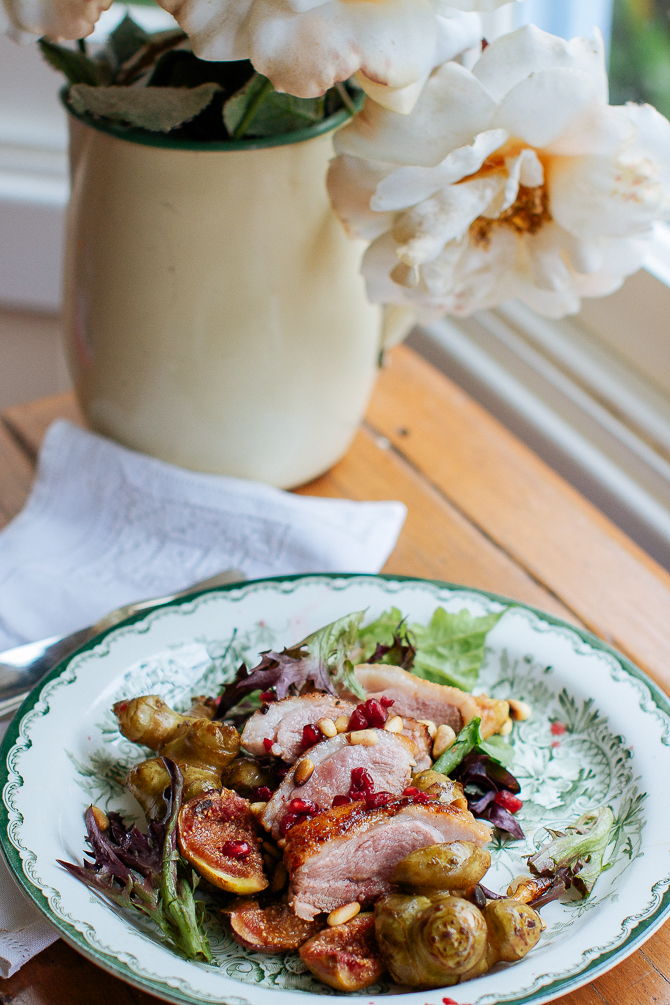
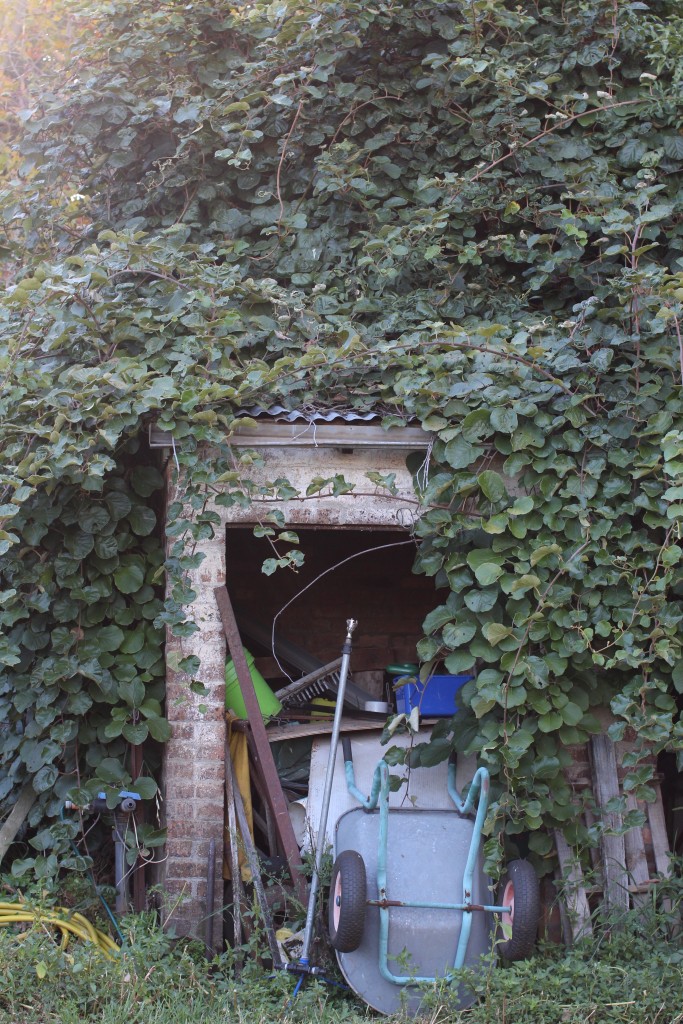
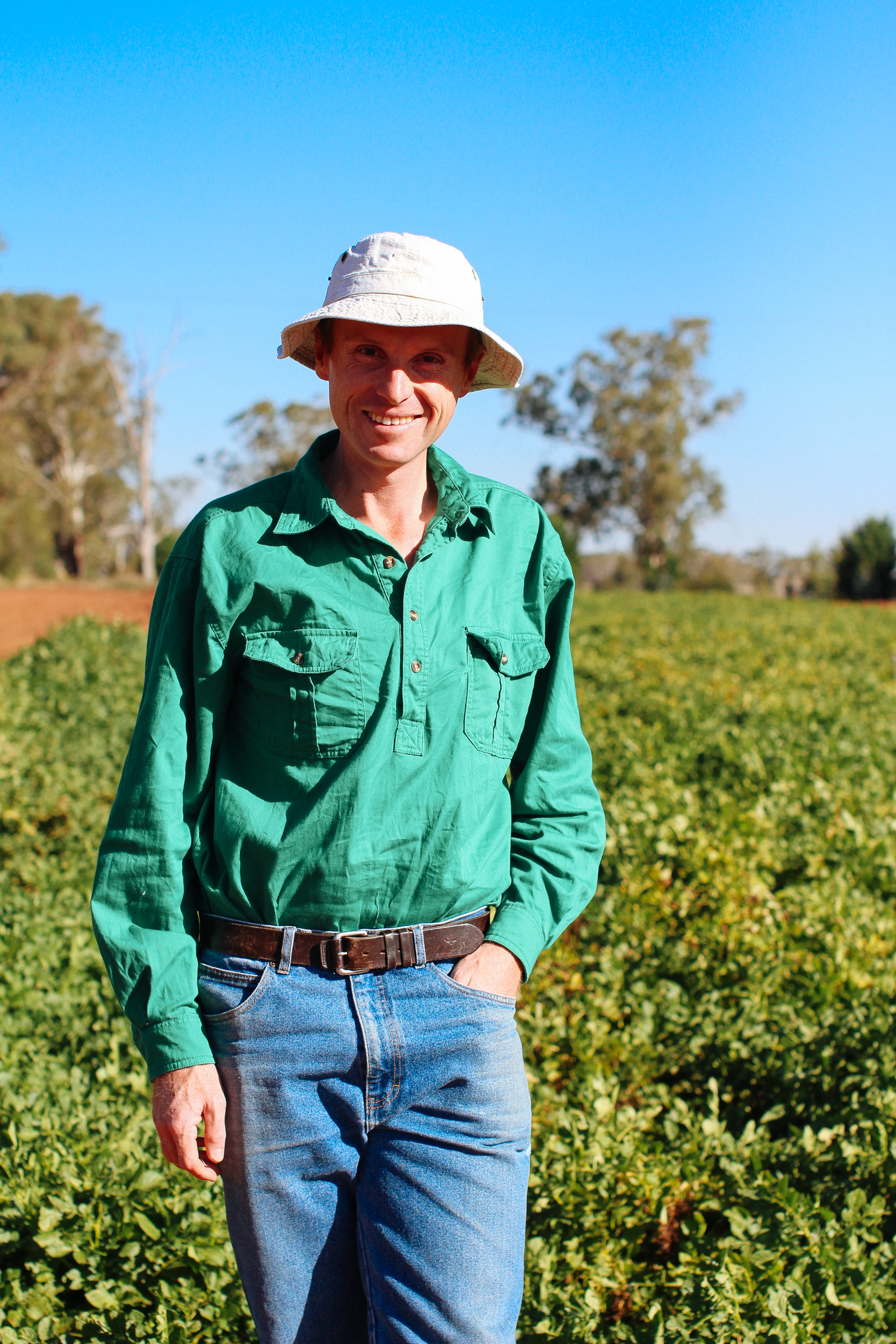


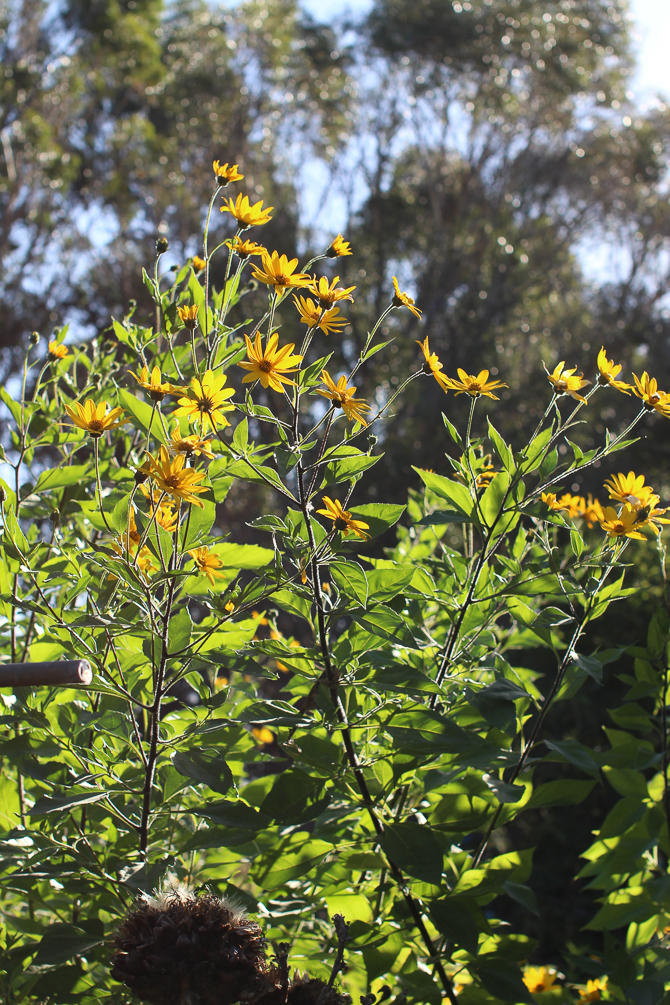
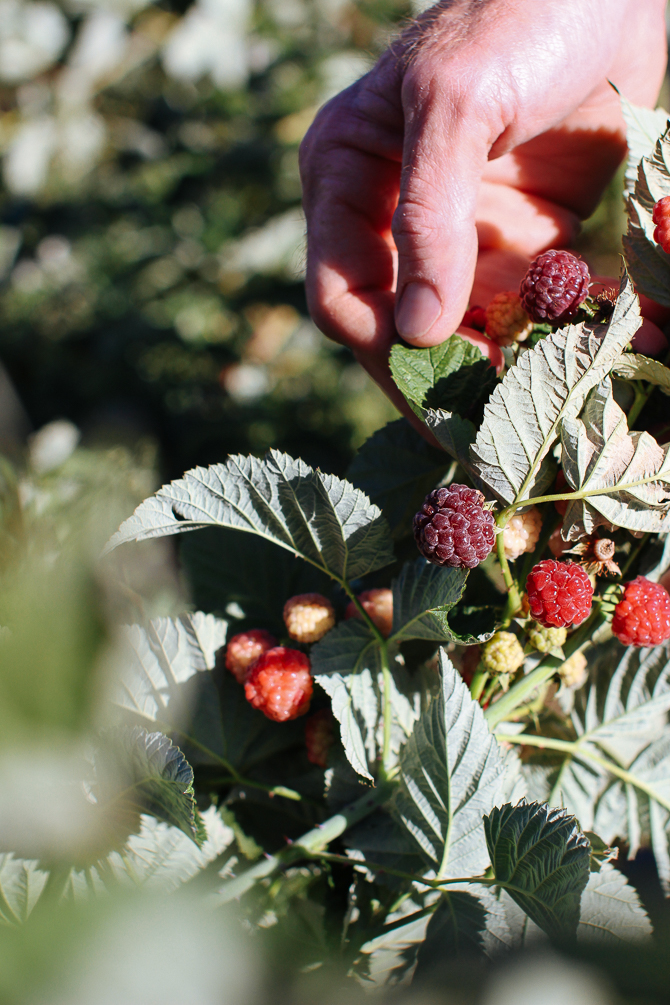

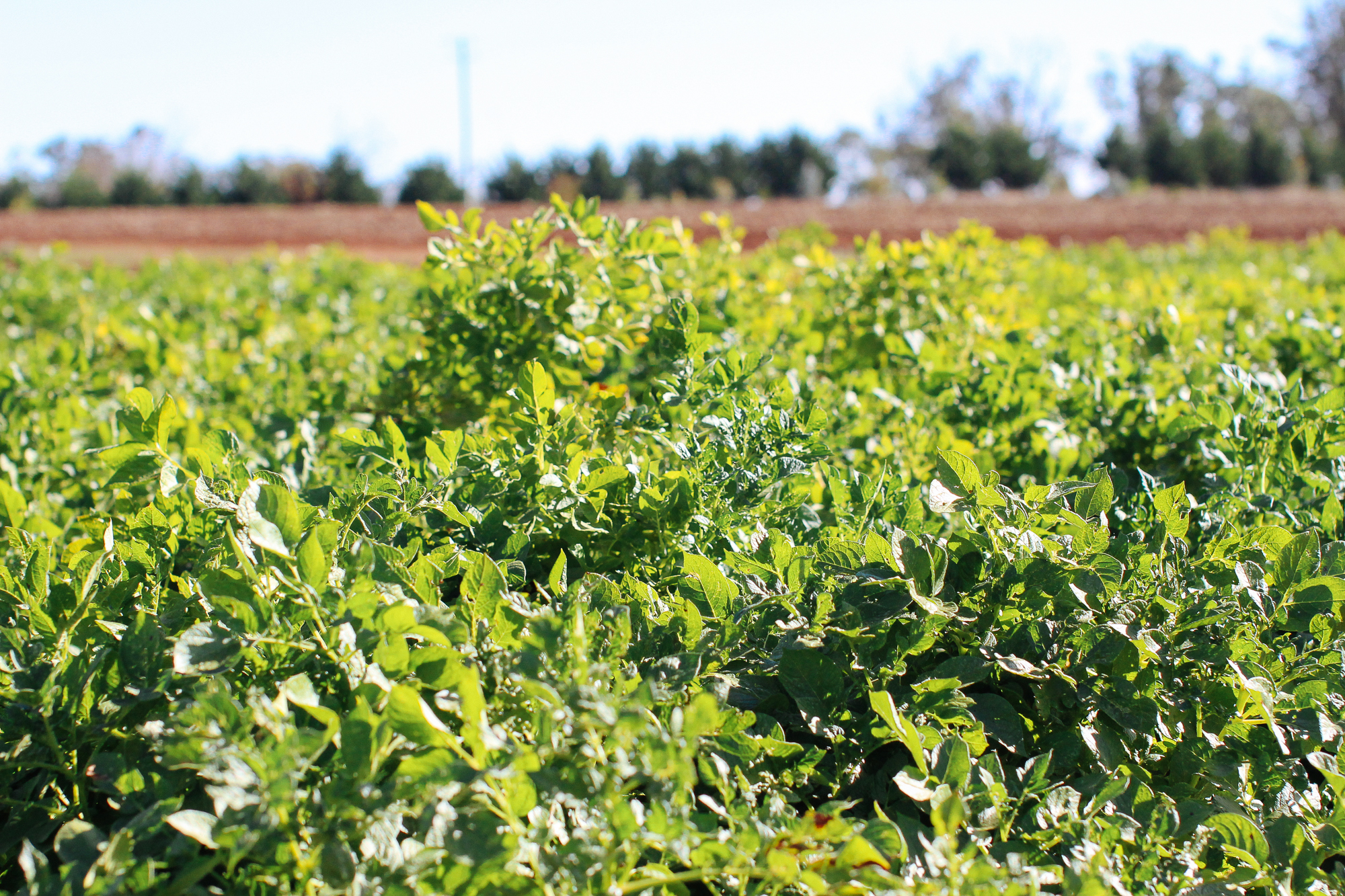
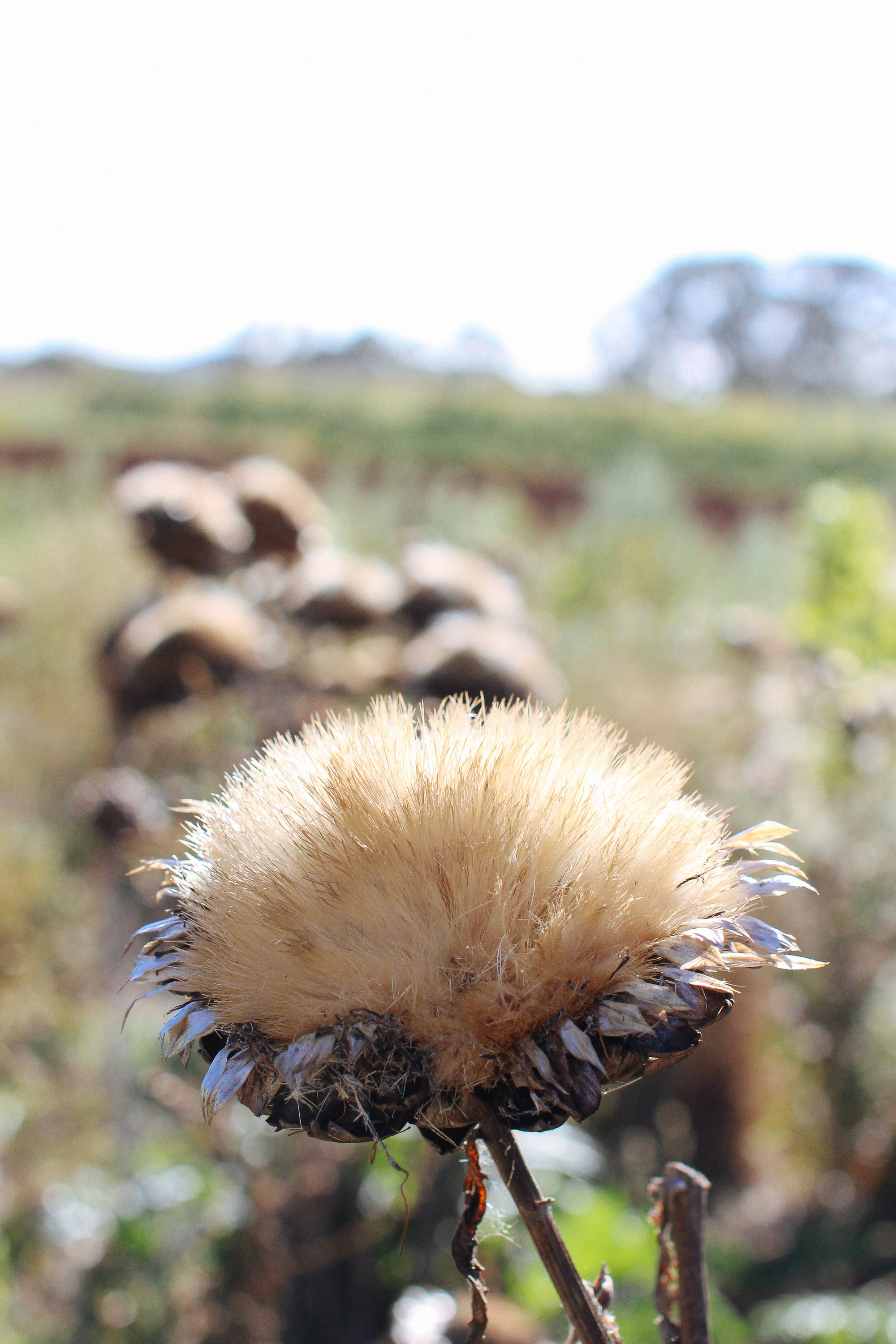
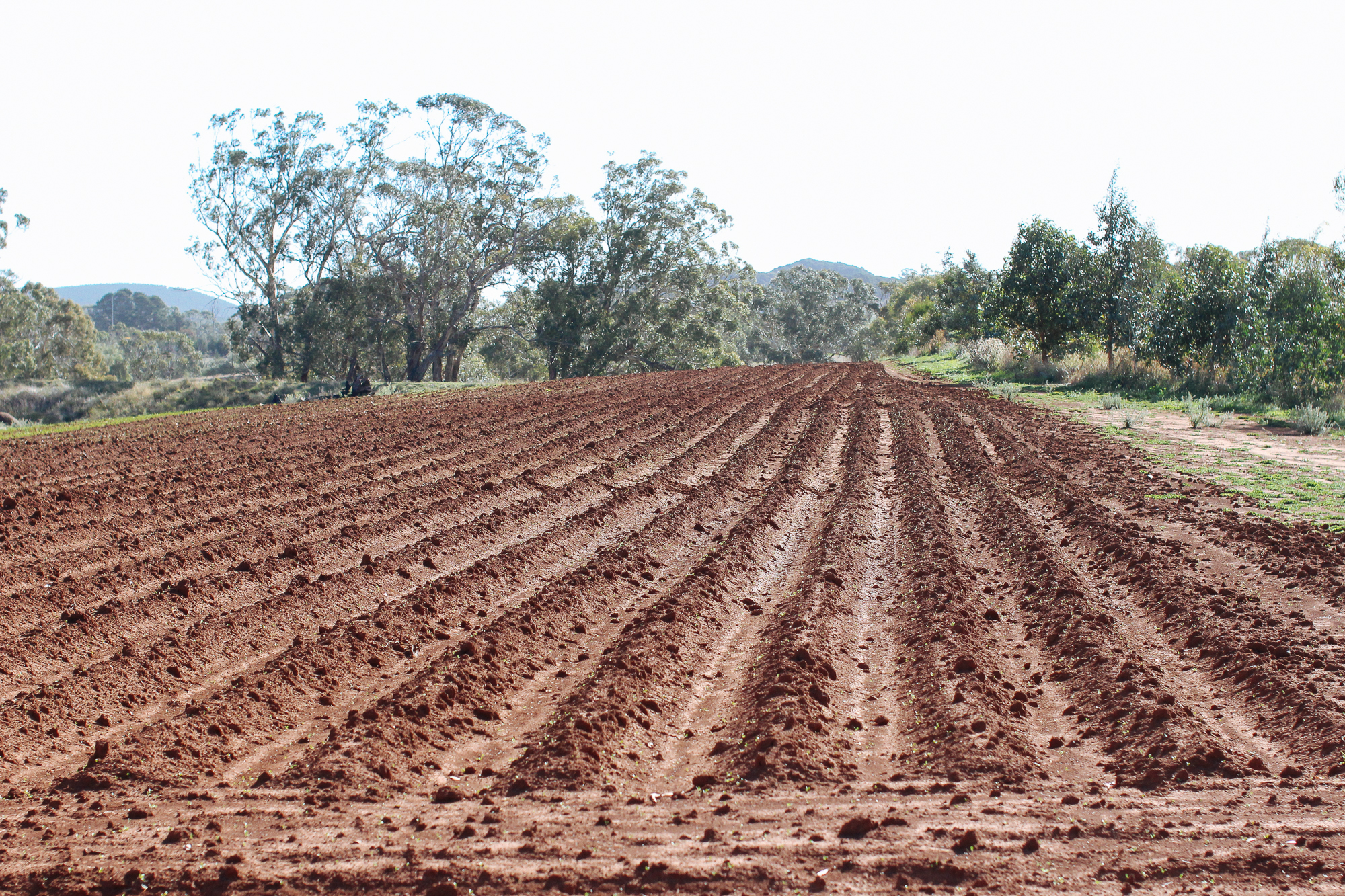
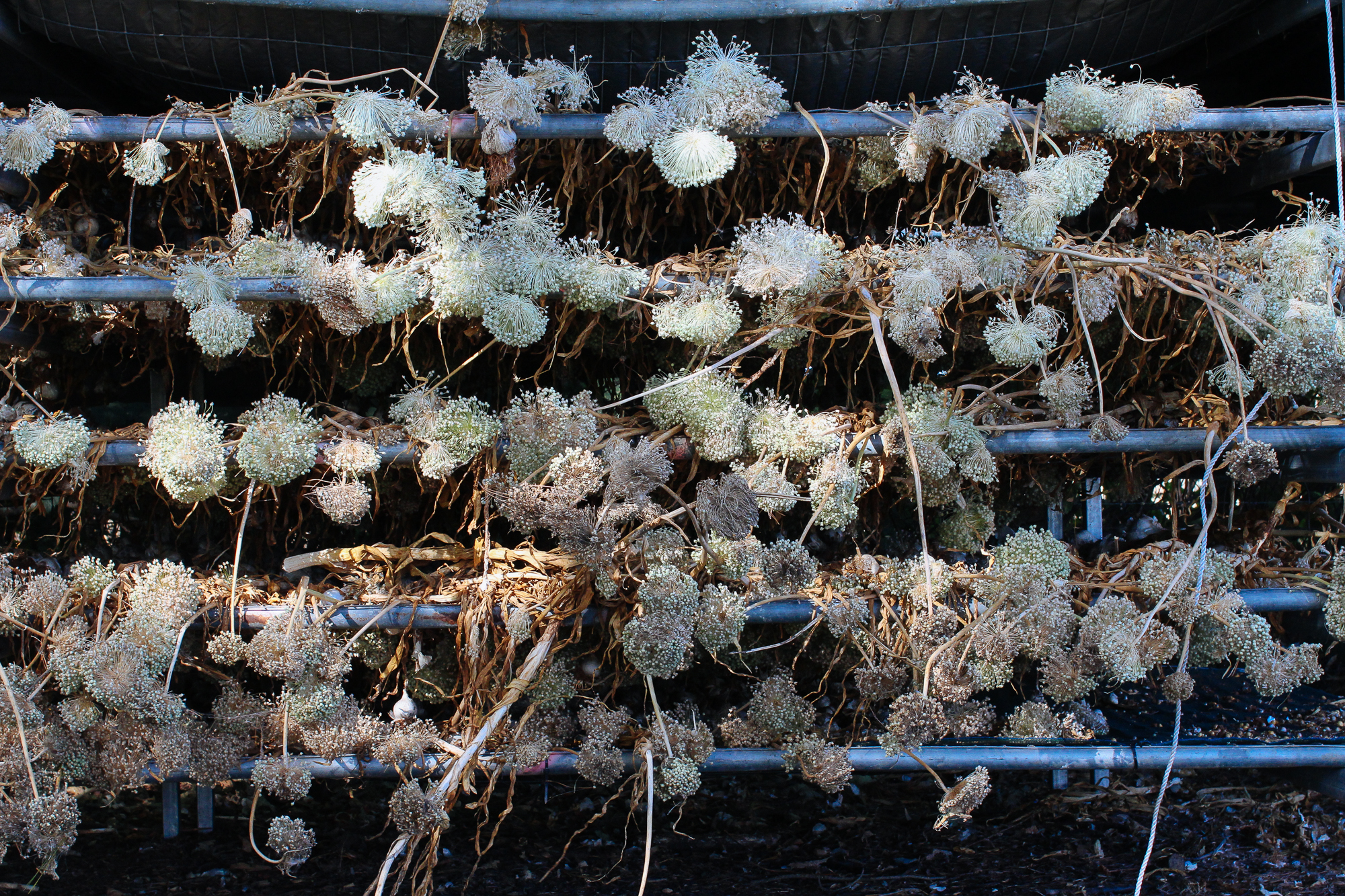
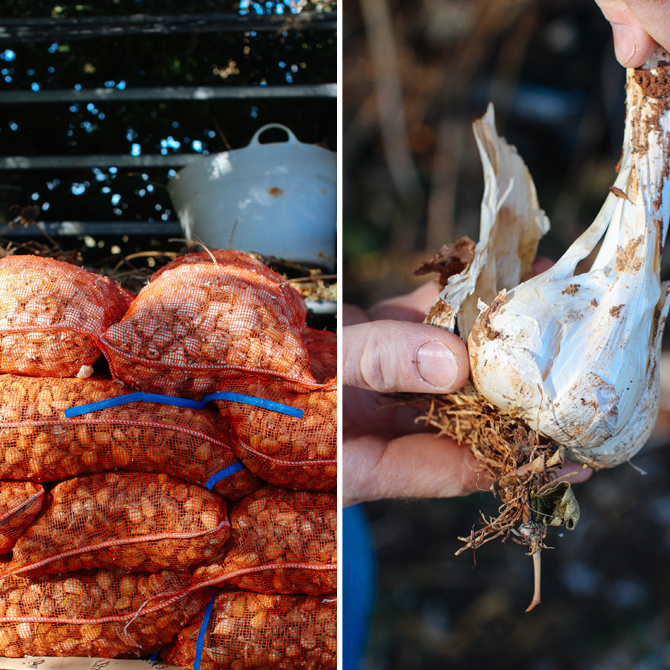



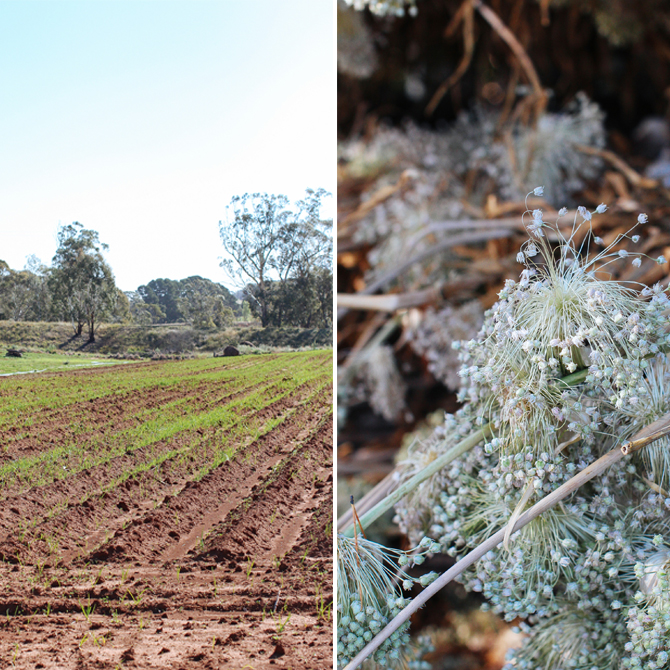
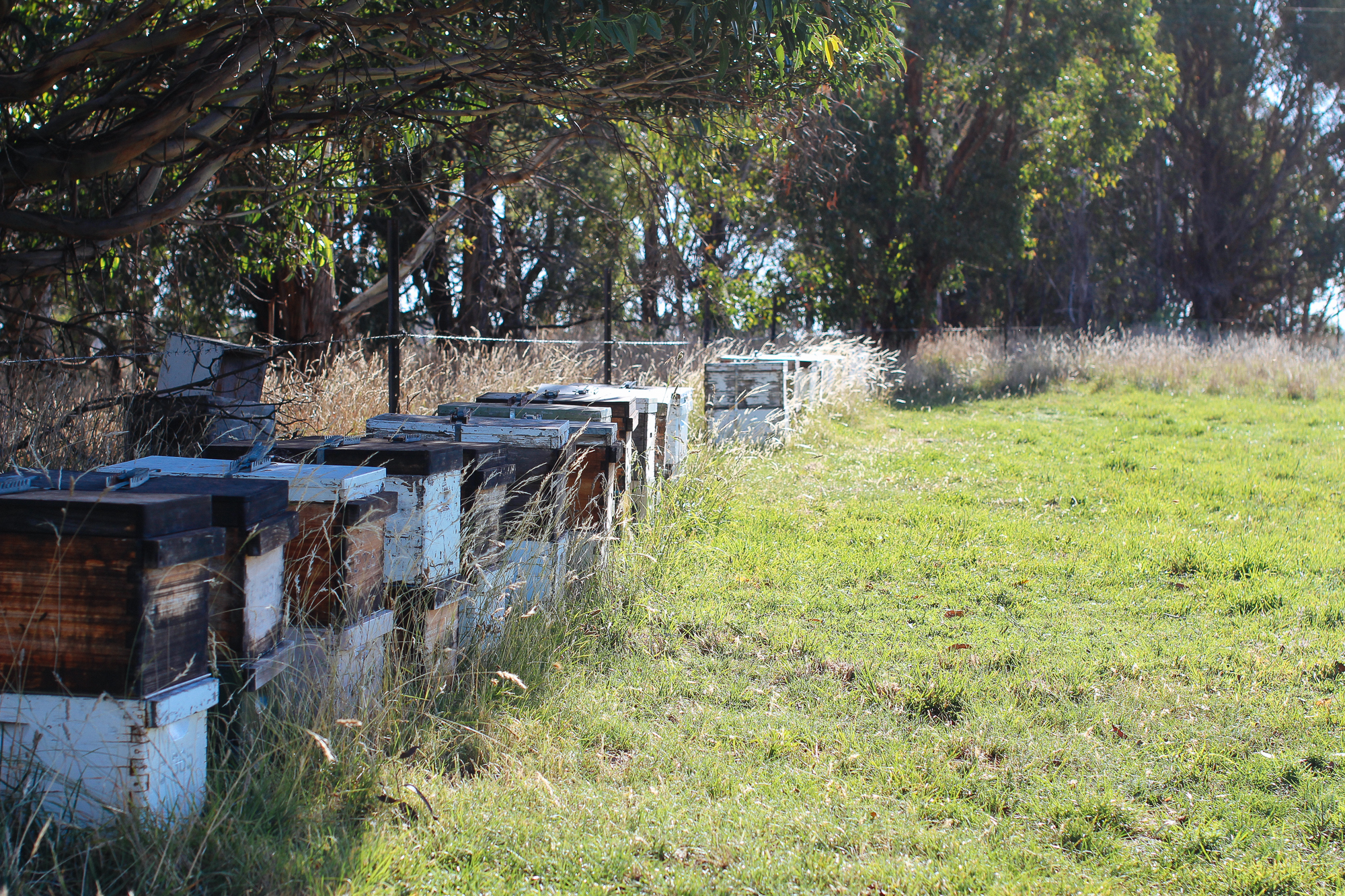
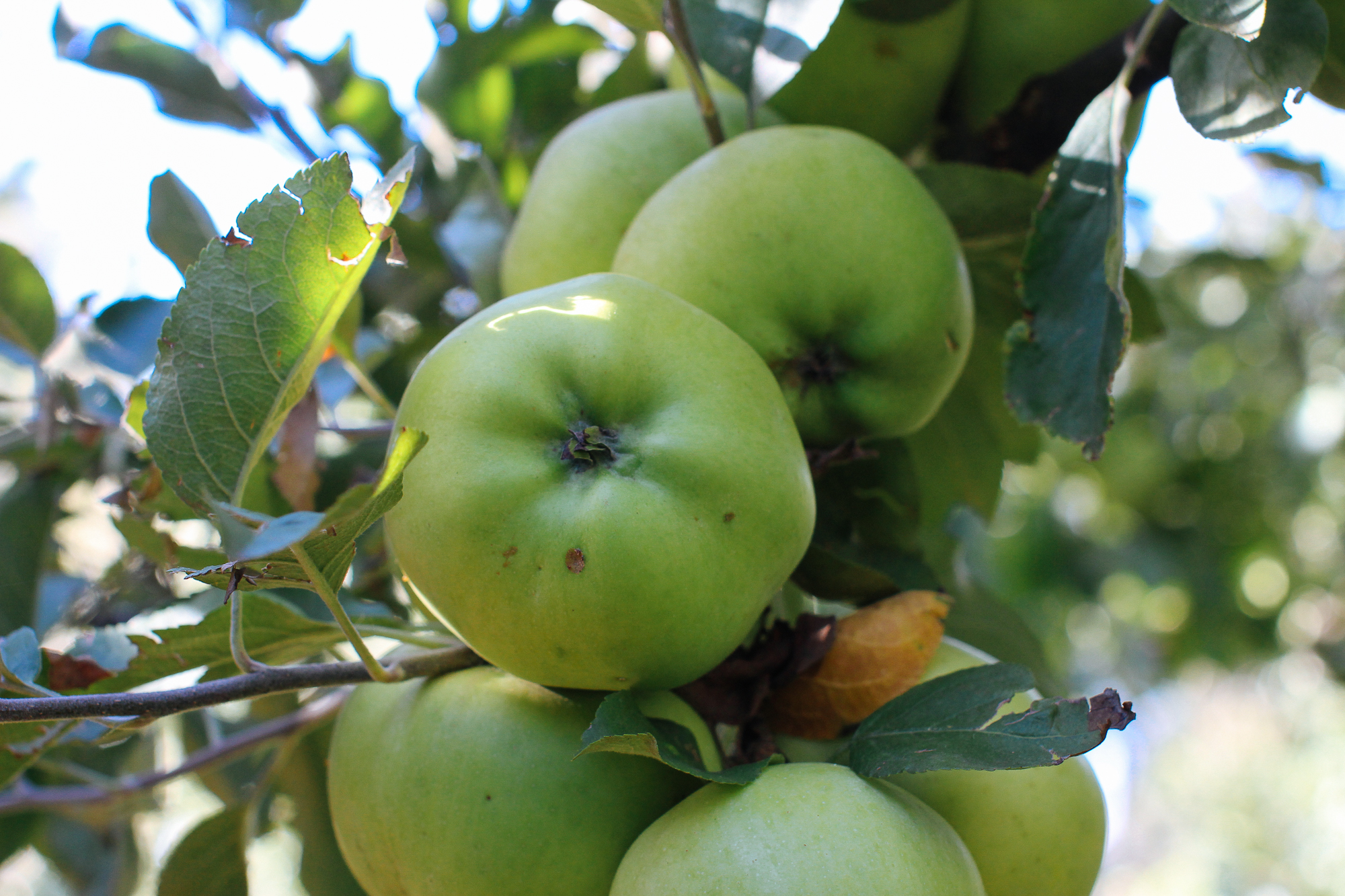



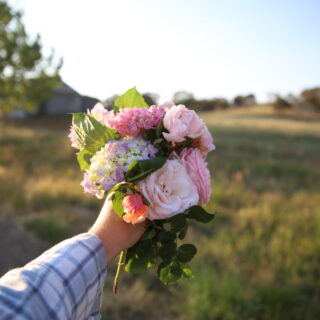
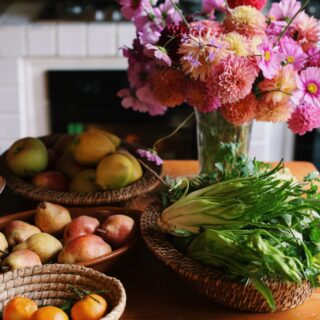

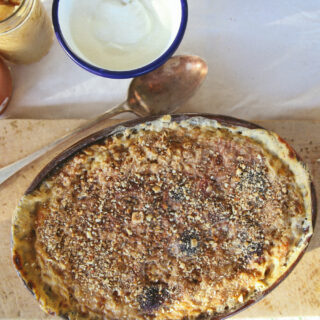

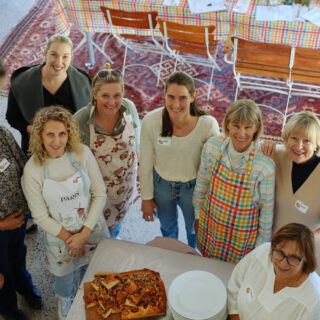
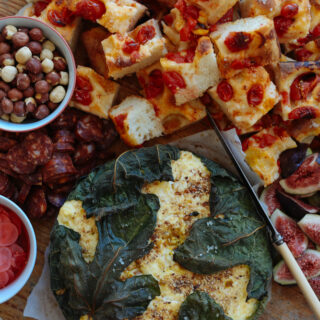

Great article and so many different crops to look after!
Great article – I went to 3 different grocery stores the other week to try to find garlic that was grown in Australia and couldn’t find any! I’m going to find Dougal’s !
Hi Aine,
The reason you had trouble finding Australian garlic at this time of year is because the season has finished and this is the growing season.
Regards,
Dougal
What a fascinating story, and lovely lovely photos! I would love to visit this farm…